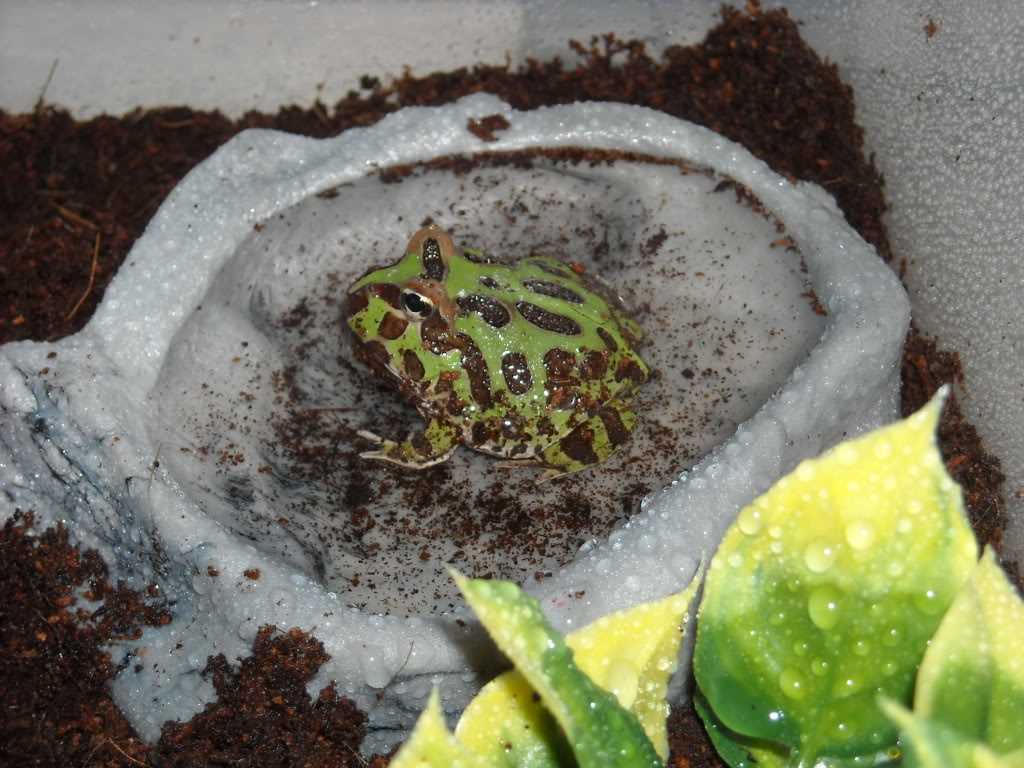
Are you considering getting a pacman frog as a pet? These unique amphibians make fascinating additions to any reptile enthusiast’s collection. However, creating the perfect environment for your pacman frog is crucial to ensuring their health and happiness. One of the most important aspects of setting up a pacman frog tank is creating the ideal habitat.
The first step in setting up the perfect pacman frog tank is selecting the right enclosure. A terrarium or glass tank with a secure lid is essential to prevent escapes. Pacman frogs are excellent jumpers and can easily escape from tanks with improperly fitting lids. Choose a tank that provides enough space for your frog to move around comfortably and includes good ventilation for airflow.
Choosing the Right Tank for Your Pacman Frog
There are a few key factors to consider when selecting a tank for your Pacman frog:
Size
The size of the tank is an important consideration. Pacman frogs need plenty of space to move around and explore. A tank that is too small can lead to stress and health problems. It is recommended to provide at least a 10-gallon tank for a hatchling or juvenile Pacman frog, and a 20-gallon tank or larger for an adult frog.
Material
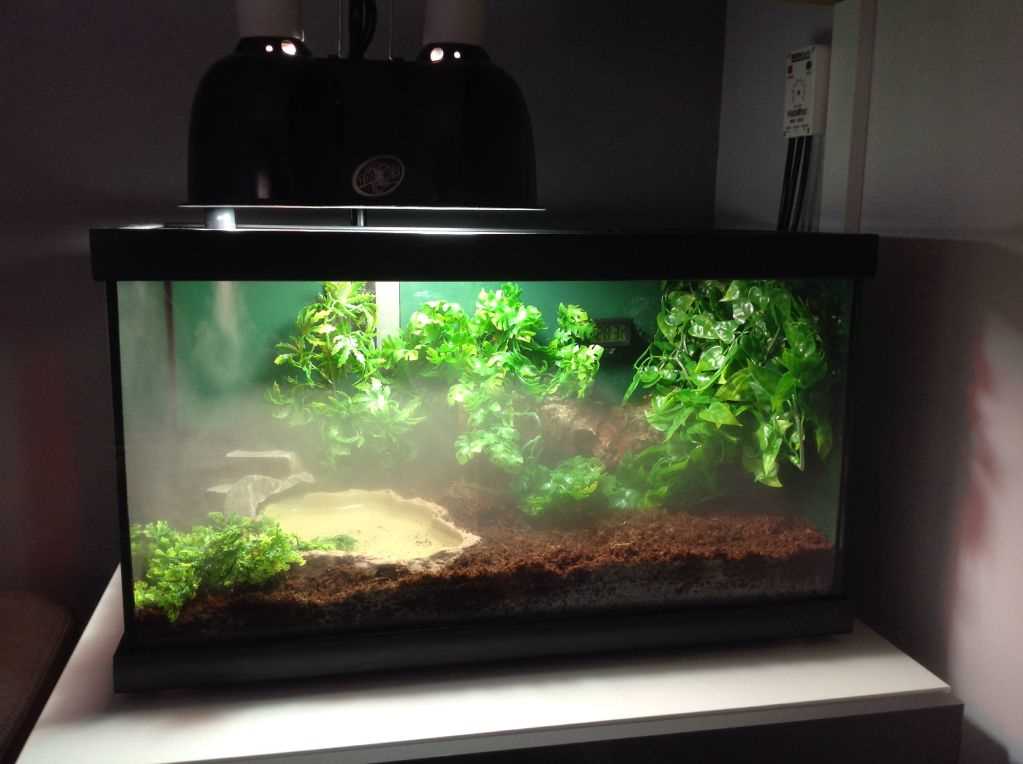
Accessibility
Consider how easy it will be to access the tank for cleaning and maintenance. Look for tanks with front-opening doors or removable lids to make it easier to reach inside. This will ensure that you can maintain a clean and healthy environment for your Pacman frog.
Ventilation
Proper ventilation is essential for creating the ideal environment for your Pacman frog. Look for tanks with screened tops or vents to allow for airflow. This will prevent the build-up of humidity and ensure that your frog has fresh air to breathe.
Setting up the Pacman Frog Tank
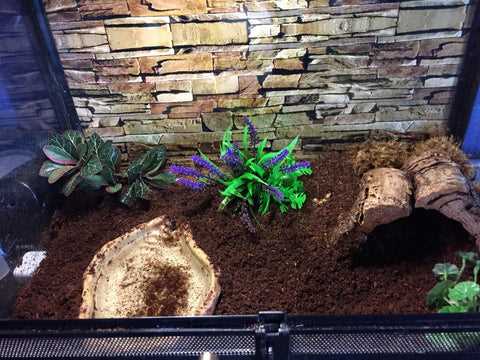
Firstly, you need to choose a suitable tank for your amphibian. A terrarium or a reptile tank with a solid structure is ideal for housing a pacman frog. Make sure the tank has enough space to accommodate your frog comfortably and to allow for the placement of necessary equipment, such as heating and lighting elements.
| Tank Size: | The size of the tank will depend on the size and number of frogs you plan to keep. Generally, a 10-gallon tank is sufficient for an adult pacman frog. However, if you have multiple frogs, a larger tank is recommended to provide ample space for each frog. |
| Substrate: | Choose a substrate that is safe, non-toxic, and holds moisture well. Coco fiber, sphagnum moss, or a mixture of both can be used as substrate for a pacman frog tank. The substrate should be at least 2-3 inches deep to allow for burrowing. |
| Decorations: | Adding various hiding spots, plants, and branches to the tank will create a stimulating and naturalistic environment for your pacman frog. Provide both dry and moist hiding areas to allow your frog to regulate its body temperature and humidity levels. |
| Water: | Pacman frogs require a shallow water source for soaking and hydrating. Use a shallow water dish that is large enough for your frog to comfortably sit in. Ensure that the water is clean and changed regularly to prevent the buildup of harmful bacteria. |
Setting up the tank correctly is crucial for the overall health and well-being of your pacman frog. Take the time to create a suitable environment that meets all of its needs, and you will be rewarded with a happy and thriving frog.
Temperature and Lighting
Temperature and lighting are crucial factors when setting up a terrarium for your Pacman frog. These amphibians are ectothermic, which means they rely on the surrounding environment to regulate their body temperature. Maintaining the correct temperature and providing proper lighting is essential for the health and well-being of your Pacman frog.
Temperature
Pacman frogs require a temperature range of 75-85°F (24-29°C) during the day and a slightly cooler temperature of 68-75°F (20-24°C) at night. To achieve this, you can use a heat mat or an under-tank heater on one side of the tank. This will create a temperature gradient, allowing your frog to choose the area that suits its needs at any given time. Make sure to monitor the temperature regularly with a reliable thermometer to ensure it remains within the appropriate range.
Lighting
Additionally, you may choose to provide a small, shaded area within the tank to allow your Pacman frog to retreat from the light if desired.
By carefully monitoring and maintaining the temperature and lighting in your Pacman frog’s tank, you can create a safe and comfortable environment that promotes their overall health and well-being.
Substrate and Decorations for Your Pacman Frog Tank
Hiding spots: Pacman frogs are nocturnal creatures and require hiding spots to feel secure during the day. You can create hiding spots by arranging plants, rocks, and other decorations in a way that creates small caves or crevices. These hiding spots mimic natural shelters and give your frog a sense of safety in its enclosure.
Water dish: Pacman frogs also need a shallow water dish in their tank. The dish should be large enough for the frog to soak in and provide fresh, clean water at all times. Make sure to clean and replenish the water regularly to prevent bacteria growth.
Feeding and Care
Proper feeding and care are essential for the health and well-being of your Pacman frog. These amphibians are voracious eaters and need a balanced diet to thrive.
1. Feeding schedule: Pacman frogs are opportunistic feeders and will eat almost anything that moves. However, you should be cautious about offering them pre-killed prey, as live food can provide mental and physical stimulation. Feed adult frogs once or twice a week, while juveniles should be fed every day or every other day.
3. Water: Pacman frogs require a shallow water dish where they can soak and hydrate themselves. Make sure to use dechlorinated water and change it regularly. Amphibians have permeable skin, so it’s essential to maintain clean water to prevent skin infections.
4. Temperature and humidity: Pacman frogs thrive in a warm and humid environment. Maintain a temperature range of 75-85°F (24-29°C) during the day and slightly cooler at night. Use a hygrometer to monitor the humidity levels, which should be around 60-80%. You can achieve this by misting the tank regularly and providing a hide area with moist substrate.
5. Handling: Pacman frogs are not the type of pets you can handle frequently. They have delicate skin, and excessive handling can cause stress and injuries. It’s best to limit handling to when necessary, such as during tank maintenance or medical check-ups.
6. Tank cleaning: Regular tank maintenance is crucial to keep your Pacman frog’s environment clean and healthy. Remove any uneaten food, feces, and shed skin promptly to prevent bacterial growth. Replace the water in the dish regularly, and clean the tank every few months by removing all substrate and disinfecting the tank and decorations.
Following these care guidelines will ensure that your Pacman frog remains happy and healthy in its terrarium environment. Remember to observe your frog’s behavior and make adjustments as necessary to meet its specific needs.
Maintenance and Cleaning
Maintaining a clean and healthy environment in your pacman frog tank is crucial for the well-being of your amphibian. Regular maintenance and cleaning will help prevent the buildup of harmful bacteria and ensure that your frog remains healthy.
Water Change
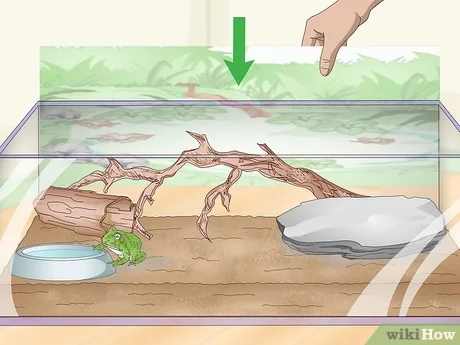
One important aspect of maintenance is regular water changes. Pacman frogs are semi-aquatic, so they require a water dish in their tank. It is essential to change the water in the dish every few days to prevent the growth of bacteria and to keep the water clean. When performing a water change, be sure to use dechlorinated water at room temperature to avoid shocking your frog.
Substrate Cleaning
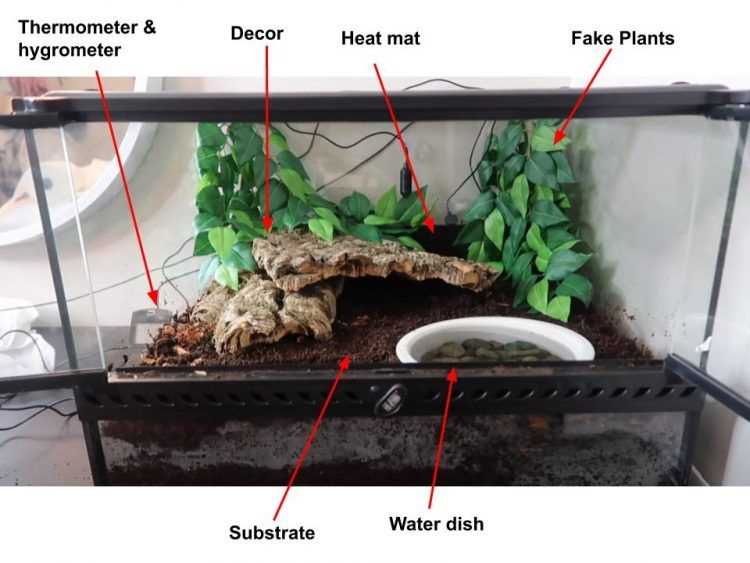
Deep Cleaning
Every few months, it is recommended to perform a deep clean of the entire tank. This involves removing all decorations, substrate, and the frog itself, and thoroughly cleaning the tank with a reptile-safe disinfectant. Be sure to rinse all items thoroughly before placing them back into the tank to ensure that no cleaning residue remains.
Filter Maintenance
By following these maintenance and cleaning tips, you can create a clean and healthy environment for your pacman frog. Regular cleaning will help prevent the growth of harmful bacteria and ensure the well-being of your beloved amphibian. Remember to always use reptile-safe cleaning products and to handle your frog with care during the cleaning process.

I’m Lena Adams—a product of an unconventional upbringing in the African wilderness. My father, a daring explorer of African wildlife, sparked my fascination with reptiles, a passion that intertwined with the tragic loss of my mother during an expedition, leaving an indelible mark on my life. Driven to understand the creatures that captivated my parents, I embarked on my journey, sharing insights about reptiles, frogs, and lizards on my website. Through my explorations and conservation efforts, I honour my family’s legacy while seeking connections—to the creatures, nature, and the mother whose presence I yearn to understand.
